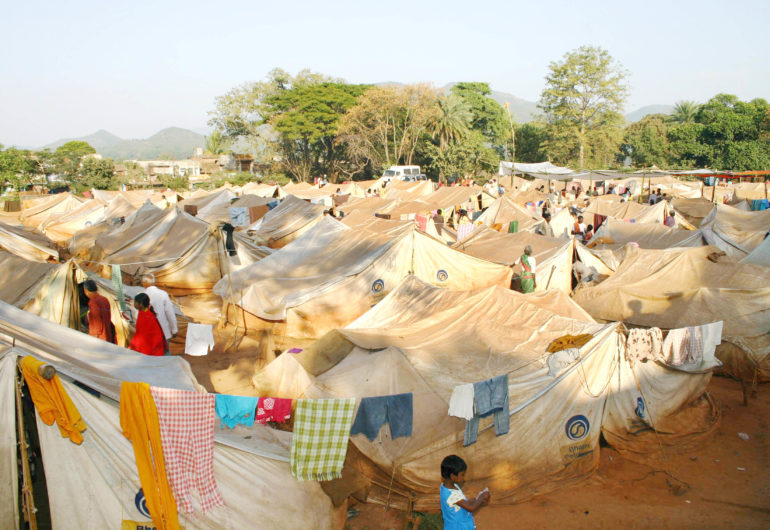
Ten years after the worst case of anti-Christian violence in India’s history, the local community continues to struggle, with reparations from the government slow in coming and seven reportedly innocent Christians still in prison.
Nearly 100 Christians were killed, 300 churches and 6,000 Christian homes were damaged, and 55,000 people were made homeless in the Kandhamal district of Odisha after the killing of a Hindu leader, Swami Laxmanananda Saraswati, on 23 August 2008.
By the end of that year, the seven Christians – Chalanseth, Sanseth, Durjo Sunamajhi, Bhaskar Sunamajhi, Budhadeb Nayak, Munda Badamajhi and Sanatan Badamajhi – had been charged with his murder. In 2013, they were each found guilty and sentenced to life imprisonment.
The convictions shocked India’s Christian community, which was still reeling after the deadly retribution attacks by Hindu mobs, who accused Christians of the killing of the swami even though Maoists had claimed the killing soon after it took place.
In June 2015, two top police officials testified that the allegations were false, yet the Christians’ appeal hearings have since been repeatedly postponed.
The seven – three of whom are Dalits, the other four tribals – continue to maintain their innocence.
According to Catholic journalist Anto Akkara, who has led a campaign for their release, their trial and conviction was “the result of an outlandish Hindu radical conspiracy rooted in the slain swami’s boastful claim that the United States, Europe, the pope and [Catholic politician] Sonia Gandhi had a vested interest in making Kandhamal a Christian region”.
In August 2016, India’s Supreme Court Chief Justice said it was “very disturbing” that such a “large number” of the perpetrators for the devastating violence that followed the swami’s murder had not yet been brought to justice.
His comments came following an investigation into the massacre that showed that of the 827 criminal cases registered, 315 cases were not pursued, while of the 362 cases in which a verdict was given, only 78 trials resulted in a conviction. Some 6,495 people were arrested, but just 150 cases are still ongoing.
In December 2016 the chief minister of the southern Indian state of Kerala called for a fresh probe into the swami’s murder. Chief Minister Pinarayi Vijayan said Hindu mobs had been “incited to attack the Christians” and that the three months of violence that followed the murder had been orchestrated.
Compensation
The local Christian community has struggled to receive adequate compensation from the government, which has been a source of much consternation.
In May this year, the High Court of Odisha ordered the disbursal of extra compensation awarded two years ago to the dependants of 14 Christians killed in the violence. It also ordered the government to make funds available to pay compensation to another 6,000 people who were either injured or whose houses were destroyed.
The lawyers who had filed the case on behalf of the relatives of the victims killed in the violence had taken the case to the High Court to move the Odisha government into action, after it did not adhere to a Supreme Court ruling in August 2016.
Following the High Court’s verdict, one of the lawyers, Pratap Chinchani, told World Watch Monitor pressure needed to be maintained on the Kandhamal district government to ensure that the compensation was distributed as the court ordered. “Since the funds are now with the Kandhamal officials, they can distribute to the victims; they can do it on their own,” he said. “The question is whether they would do that.”
Since the Hindu nationalist BJP came to power in 2014, radical Hinduism has increased steadily in India, as have attacks on Christians. Several states outlaw proselytism, and there have been efforts to impose such so-called “anti-conversion laws” at a national level. The violence of radical Hindu groups or angry mobs of villagers is often allowed by local, state and national authorities dominated by the BJP. This means the Hindu radicals can act with increasing impunity.